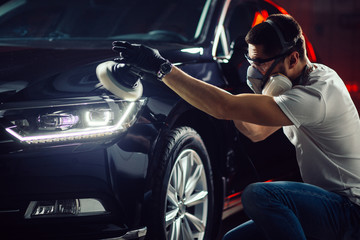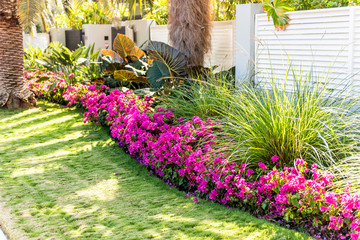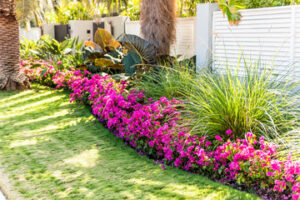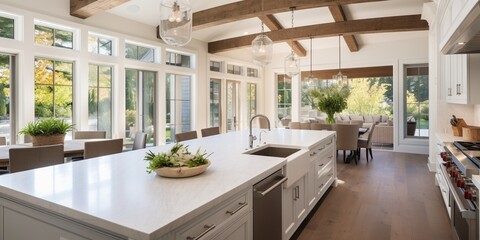Auto detailing is a service that restores the shine of a car’s exterior and interior. It also helps protect the vehicle from future damage, which increases its resale value.
The business plan must include a cost and profit model that you can use to calculate your prices. Make sure to factor in fixed costs like materials and utility expenses as well as variable costs like employee wages and taxes. Visit https://futureimagedetailing.com/ to learn more.
While many car owners clean their own cars, detailing a vehicle requires more than just soap and water or a sponge and rags. Detailing is a meticulous process that includes a series of cleaning and restoration techniques and high-quality products to restore a car to its newest condition. This often means washing, buffing, and polishing the exterior paint, removing stains and spots from carpeting and upholstery, and treating surfaces to protect them from damage.
In addition to a deep clean, auto detailing also involves sanitizing the interior of the vehicle. This can include vacuuming and shampooing the carpeting, seats, and other upholstery, and sanitizing all surfaces that come into contact with food or drinks. It also involves removing trash, getting rid of odors, and restoring the fabric or leather to its original shine.
Some of these procedures can be done at home, but a professional auto detailer will have the equipment and know-how to make your vehicle look its best. They will have the ability to remove tar and road salt from a car’s finish, and can apply waxes or sealants that can help to prevent damage from sunlight, rain, and road salt over time. They will also be able to apply specialized coatings that can help to protect the surface of a car, from scratches and dings, or to prevent fading and cracking.
A thorough interior and exterior cleaning is essential for a vehicle, whether it’s being put up for sale or just being driven regularly. It’s a great way to keep a vehicle looking new and smelling fresh, as well as protecting its value over time.
When starting an auto detailing business, it’s important to determine how you will finance it and what the estimated startup costs are. You can choose to self-fund your business, raise venture capital or crowdfunding, or take out a loan. It’s also helpful to create a cost and profit model for your company, so that you can share it with potential investors. This will help them see the potential for a return on their investment.
Exterior
A professional car detailing shop can take care of all your needs, from a basic wash to a complete interior and exterior restoration. It can even include paint protection and ceramic coatings to prevent scratches from road debris, bird droppings, and acid rain. There are also extra services that can help keep your vehicle looking new, like rim trims, paint correction, and headlight polishing. These extras can be a great way to impress clients and make your auto detailing business stand out from the competition.
When choosing a car detailing service, it is important to choose one with experience and a good reputation. A reputable company will have a website where you can see reviews from customers. In addition, you can check their licenses and permits to ensure that they are operating legally. It is also a good idea to create a business plan for your car detailing business. This will help you determine the cost of your services and how much you should charge. You can also use a business accounting software solution to help you keep track of your finances.
Using a high-quality wax can protect your car’s finish from environmental damage. It can also reduce the amount of dirt that builds up in hard-to-reach areas. Additionally, you can add a polyurethane film to the windshield and the windows to prevent water spots and sun damage. Adding these options will make your vehicle look brand new and will improve its resale value.
If you are considering starting a car detailing business, you should consider your location and the demand for your services in your area. You should also draft a business plan and determine the type of entity that you want to form, such as a sole proprietorship, partnership, limited liability company, or corporation. You should also register your business with your local business department or chamber of commerce.
Starting a car detailing business can be challenging, but it is possible with the right level of preparation and forethought. Having a detailed business plan, registering your business, and creating a marketing strategy can help you drum up interest in your car detailing services at the start and keep your business growing after that.
Customization
Investing in auto detailing is an excellent way to maintain the appearance and value of your vehicle. Choosing the right package and working with a professional detailer are essential. But, if you’re thinking about starting your own car detailing business, there are a few important things to keep in mind.
Before getting started, make sure to register your business, and create a business structure that best suits your needs. A limited liability corporation (LLC) is a popular choice for new businesses because it protects your personal finances in case the company fails. In addition, it allows you to take advantage of tax benefits.
In the current economy, people are buying fewer new cars and driving their vehicles longer. This has led to a higher demand for auto detailing services. As a result, many people are opening their own detailing businesses to capitalize on this growing market. However, starting a detailing business requires careful planning and preparation. The first step is to determine how much money you need to start your business. This includes startup costs, as well as the cost of materials and equipment.
Once you have a clear idea of how much you want to spend on your auto detailing business, you can begin preparing a budget. This will help you determine your prices and ensure that your services are competitive. If you’re unsure of what price to charge for your services, consider your competition and how much they are charging. You may also want to consider offering additional services, such as paintless dent removal and noise isolation.
Custom detailing is a highly customized service that is tailored to each customer’s specific needs and preferences. It can include everything from unique exterior finishes to personalized interior treatments. Some examples of these customizations include tinting, headlight restoration, and vinyl wraps. Another option is to treat your car’s wheels with a special coating, which can enhance their appearance and provide advanced protection against brake dust and road contaminants. A customized detail can also incorporate elements that are unique to the vehicle owner, such as pinstripes or artistic designs.
Warranty
A quality warranty is an essential part of any auto detailing business. It gives customers confidence in the service you provide and can help you build a strong reputation among clients. In addition, a well-written warranty can protect your business from legal issues that could arise in the future. Creating a warranty is easy, and there are many resources available to help you write one.
As a new detailer, it’s important to understand the types of insurance coverage you will need for your business. Some common types include general liability, vehicle and property insurance and worker’s compensation, which is required in most states if you employ employees. You can find out what kind of coverage you need by reviewing the laws in your state or talking to a business attorney.
If you’re going to be a mobile detailer, it’s essential to have a vehicle that’s in good condition both mechanically and visually. If possible, choose a vehicle that reflects your brand and can carry all of your detailing tools and supplies. Make sure to consider the cost of gas and maintenance as well as parking challenges and limitations in your service area.
It’s also important to have a clear understanding of how your business will operate, including the types of services you will offer and what the cost of each service will be. A thorough business plan can help you develop a successful car detailing company that will thrive for years to come.
A comprehensive list of services will set your business apart from competitors and increase customer satisfaction. In addition to basic cleaning and waxing, you should offer options like paint correction, ceramic coatings and window tinting. By offering a variety of services, you can cater to customers with different budgets and preferences.
The auto-detailing industry offers a lot of potential for business startups, and having a well-thought-out marketing strategy will help drum up demand when you first launch your company. A well-planned strategy will also help you keep your business growing after those initial first few months.
Keeping accurate financial records is essential for any small business, and auto-detailing is no exception. Choosing accounting software that aligns with your business needs will make the process of tracking and reporting your finances much easier. Whether you’re running a full-scale commercial detailing service or a home business, using a professional system will save you time and money in the long run.






